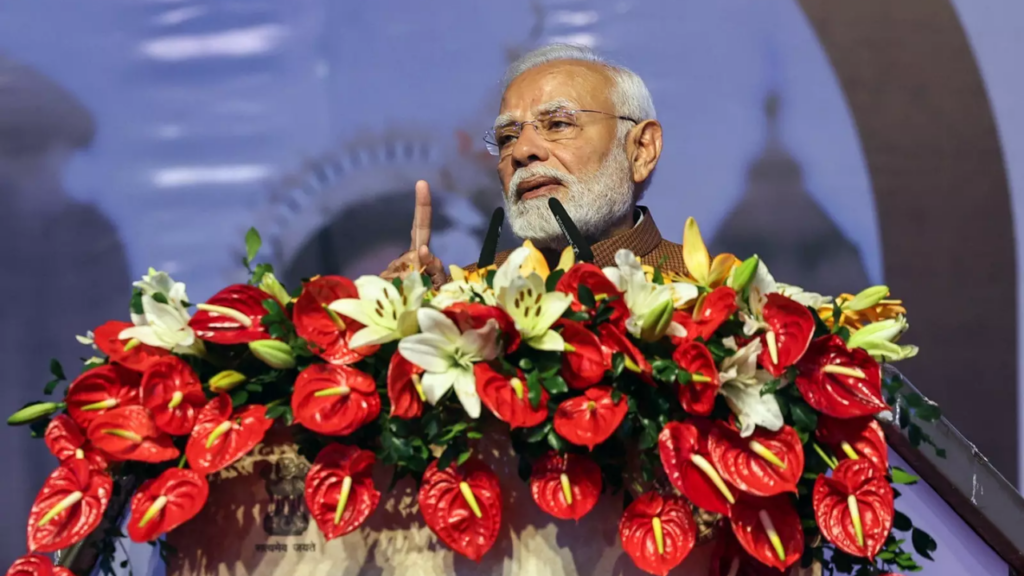By Dr. Sobhanlal Datta Gupta
A controversy has erupted centring around CPI(M)’s position expressed in the Draft Political Resolution for the ensuing 24th Party Congress that the present Narendra Modi Government is not fascist, but marked by fascist tendencies. This stand has been subjected to criticisms by other Left parties on the ground that this would amount to underestimation of the danger posed by the BJP and the RSS, the latter being an out and out fascist outfit, and this would weaken the fight against the present regime.
In my assessment of the CPI(M) position, a clear distinction has to be made between strategy and tactic, the reason being that in Kerala and West Bengal for CPI(M), the immediate enemies are Congress and TMC and, consequently, the tendency to soft pedal the BJP as a tactic is evident in sections not of leadership but at lower levels. In West Bengal this has resulted in the marginalization of the Left, notably the CPI(M), as BJP has come up to the second position as an electoral force despite its poor organizational strength.
If tactic overrides strategy, evaluation of the present regime would also be flawed. In fact, critics of CPI(M) allege that it is this politics of immediacy which has been haunting the CPI(M) in these two states, these being their two biggest strongholds. I have no idea whether this has been a factor in CPI)M)’s evaluation of the present regime. However, in West Bengal it is evident that at the ground level the main target is TMC. This is understandable for the reason that the Party has to encounter the menace of the ubiquitous presence of TMC at every level, thereby bearing the brunt. But when as a tactical ploy it continuously indulges in the exercise of equating BJP with TMC at the ground level in order to convince the people that the fight against TMC is also a fight against BJP, this is increasingly becoming suicidal, as already evident in the repeated electoral reverses.
The reasons are manifold. First, despite the fact that TMC is authoritarian and corrupt to the core there is a qualitative difference between TMC and BJP which, again, does not at all lead to the conclusion that TMC can be an ally in the fight against BJP. Two, there are evidences galore which are clearly indicative of the fact that there is a setting between the TMC and the BJP at the highest level, while at the lower level the ranks of both the parties are expendable and thereby at daggers drawn, vying for power to grab the resources.
Consequently, at the ground level, especially in the vast rural hinterland, the masses do not just buy the theory of equivalence. This understanding ultimately weakens the very fight against BJP, the reason being that TMC and BJP have two altogether different approaches in hoodwinking the masses. BJP’s approach is primarily ideological, underlying which there is a long term vision and perspective, a characteristic of fascism. TMC’s approach is person-oriented, ad hoc and populist, which reaps immediate dividends and this acts as the electoral glue for TMC. CPI(M)’s equivalence theory, unless it is discarded, would lead to further erosion of the Party and provide a booster to TMC and BJP.
The understanding whether the present regime is fascist or neo-fascist, should be guided by long-term strategic and not short-term tactical considerations. I would describe it as neither fascist nor neo-fascist but semi-fascist or a regime symptomatic of strong features of fascism. The justification is: (a) Fascism is marked by a distinct ideological vision, buttressed by an organizational outfit in the form of an armed squad. The present regime, at the helm of which is BJP, anchored in RSS, apparently fits in very well with these parameters and one would be tempted to brand it as fascist.
But despite its agenda of building a Hindu Rashtra or one homogenous India by killing the spirit of pluralism and diversity, it is not yet in a position to realize this goal in the foreseeable future, because of the fulminating opposition as well as legal hurdles, as evident in judicial strictures on many occasions in recent times. The Government’s plan of dropping some of the crucial expressions in the Preamble to the Constitution and thereby killing its spirit has not worked. On a number of occasions the Court has given verdicts which have sounded quite unsavoury for the ruling party. Despite the corporate bid to control the media there are many spaces left where the citizens can raise their voices. In a typical fascist set up, the spaces are blocked and that is done through legal enactments whereby any protest, any critique is silenced by resorting to law itself.
If it is stated that fascism has already arrived in India then what would have been the case had the present Government come to power with a thumping majority, clearing the decks for establishing a Hindu Rashtra ? How the qualitative difference between the current position and the possible happening could then be interpreted ?
The present regime is neither fascist nor neo-fascist for the reason that it does not correspond to either classical fascism or neo-fascism . Among the academics there is no agreement on the meaning of neo-fascism. In today’s world, as fascist forces are coming to power electorally, to my mind the most apt way of understanding neo-fascism would be to describe it as a more tempered variation of fascism where the fascists come to power with thumping majority but operate within the legal-constitutional framework, i.e., Italy today .They will not scrap the Constitution or the legal machinery, as did Hitler, but will certainly change those provisions where needed.
The present regime is also up to, but has not succeeded as yet. Once they succeed in doing it, characterization of the regime will also change. We have to understand that the BJP has to be constantly in dialogue mode in relation to TDP and JD(U),they being two rather unstable and fragile non-ideological allies. So there is a big difference between BJP being the sole driver of the Government and the driving seat being occupied by two more. That is why I think right now it would be better to describe the present regime as semi-fascist, marked, however, by very strong features of fascism rather than using somewhat soft and indeterminate expressions like “trends” or “tendencies”.
One must not forget that whatever be the impediments the BJP-RSS combine is driven by a single-point agenda, that is, the establishment of a Hindu Rashtra, which would be the Indian variant of fascism. Fascism is in the air, as was the situation in Italy and Germany in pre-1926 and pre-1933 years but it is yet to come and it has got to be resisted because of the strong possibility of its arrival for the reason that the opposition, despite its potential, has, till now, failed to present itself as a viable alternative.
As far as the opposition is concerned all the allies must act with a great sense of responsibility and it must be stated clearly that the biggest responsibility lies with the Congress. It must shun its big-brotherly attitude towards others, especially for the reason that its ideological capital is now almost vapid, not to say of the rest of the Opposition except the Left. History will not forgive the opposition for their failure to resist a possible take over of power by the BJP as a full-blown force with a thumping majority, reminding one of what happened to Germany when the Social Democrats and the Communists fought among themselves instead of fighting the bigger menace of fascism which came to power in 1933 and finished them off. (IPA Service)
The writer is former SN Banerjee Professor of Political Science, University of Calcutta

 Khalistani Extremists Target Jaishankar in London
Khalistani Extremists Target Jaishankar in London 